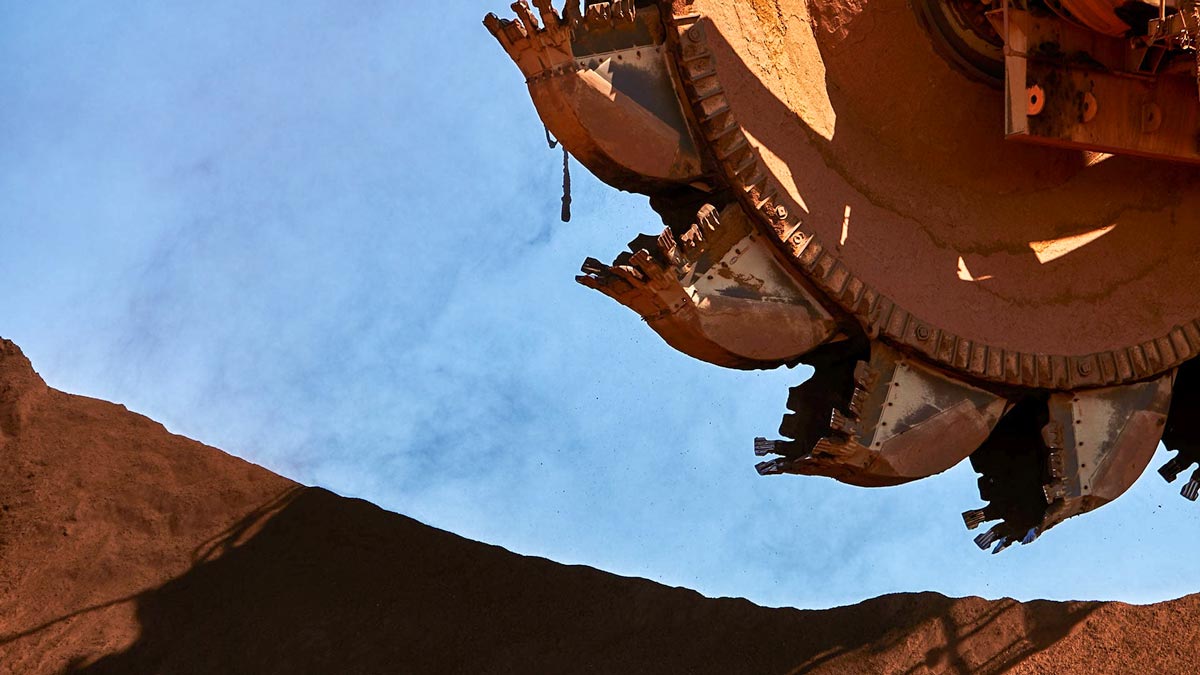One of Australia’s biggest resources companies says “high and rising” carbon prices will be needed to keep global warming within safe levels after its own internal analysis found a “technology-led” approach would not deliver the emissions reductions required to meet the Paris Agreement goals.
In findings that standing in contrast to the Morrison government’s preferred technology not taxes’ approach to climate policy, Rio Tinto said that a “technology-led” scenario modelled by the company would not deliver the emissions reductions needed to keep global warming within 2 degrees.
“In a technology-led scenario, innovation boosts economic productivity and decarbonisation efforts; however, carbon prices remain modest (ranging US$10 to US$75/t CO2e by 2030) and action to limit emission is insufficient, so warming exceeds 2°C by 2100,” Rio Tinto’s half yearly report report says.
While Rio Tinto did not specifically model the Morrison government’s climate change package, the company’s economic analysis does suggest that forms of carbon pricing will be necessary to achieve stronger emissions reductions.
Rio Tinto pointed to a “society-led” scenario – that assumed much higher carbon prices, reaching US$130 (A$180) per tonne by 2050 – that would provide a sufficient market signal to cut emissions to levels consistent with the Paris Agreement goal of keeping global warming to below 2 degrees.
The Coalition government has consistently rejected calls for the introduction of a price on Australian carbon emissions, having repealed the carbon price introduced by the previous Labor government.
The Morrison government’s “technology not taxes” policy stance has seen the government eschew policies that would impose restrictions on the amount of greenhouse gas emissions produced by Australian industries and has instead focused on funding technologies that support the ongoing use of fossil fuels.
While the Australian electricity system undergoes an accelerating shift to lower-cost sources of wind and solar power, the Morrison government has poured funds into the expansion of Australia’s gas industries and funding unproven carbon capture and storage technologies.

However, the refusal to impose a cost on greenhouse gas emissions has raised the prospect that Australian industries become the target of measures like carbon border taxes, like that being implemented by the European Union.
It is companies like Rio Tinto and other major producers of emissions intensive materials like aluminium that may be targeted by such a carbon border tax.
After completing an exit from its coal business in 2018, Rio Tinto’s core businesses now focus on aluminium, iron ore, copper and other minerals. At 21.9 million tonnes of CO2 emissions, the company’s aluminium segment is responsible for the bulk of Rio Tinto’s emissions footprint.
Rio Tinto’s update said that the company was committed to decarbonising its operations, with the company recently signing an MoU with the Tasmanian government, committing to the increased use of hydrogen in its aluminium operations in Bell Bay, and the purchase of renewable energy.
In the update, Rio Tinto confirmed targets to reduce its scope 1 and 2 emissions by 50 per cent by 2030 – a target that is significantly stronger than the 26 to 28 per cent reduction adopted by the Morrison government – along with its longer-term commitment to reaching zero net emissions by 2050.
To achieve these targets, Rio Tinto has committed to investing around $10 billion in the development of as much as 7GW of new wind and solar capacity, to provide zero emissions electricity to its operations.
“These projects deliver a range of economic outcomes but in aggregate are value accretive at a very modest carbon price. Most importantly, they safeguard the integrity of our assets over the longer term and reduce the risk profile of our cash flows. We are accelerating our activity in the Pilbara and expanding our tenure for potential wind and solar sites,” Rio Tinto said in its half-year update.
While the update suggests that Rio Tinto is willing to go further in reducing emissions than the federal government, the resources giant copped criticism from shareholder advocacy group the Australasian Centre for Corporate Responsibility (ACCR), which argued Rio Tinto had failed to fulfil a commitment to cease its membership of lobby groups that sought to delay climate action.
“Rio Tinto continues to give a free pass to pro-coal advocacy by the Minerals Council of Australia (MCA) and the Queensland Resources Council (QRC) in Australia, and the National Mining Association in the United States,” ACCR’s director of climate and environment,” Dan Gocher, said.
“Years of engagement with Rio Tinto on this issue has failed to see any tangible progress. The MCA and the QRC continue to advocate for thermal coal expansion, in the form of new and expanded mines in NSW and Queensland, and regularly claim that Australia can meet growing demand for coal in Asia.”










